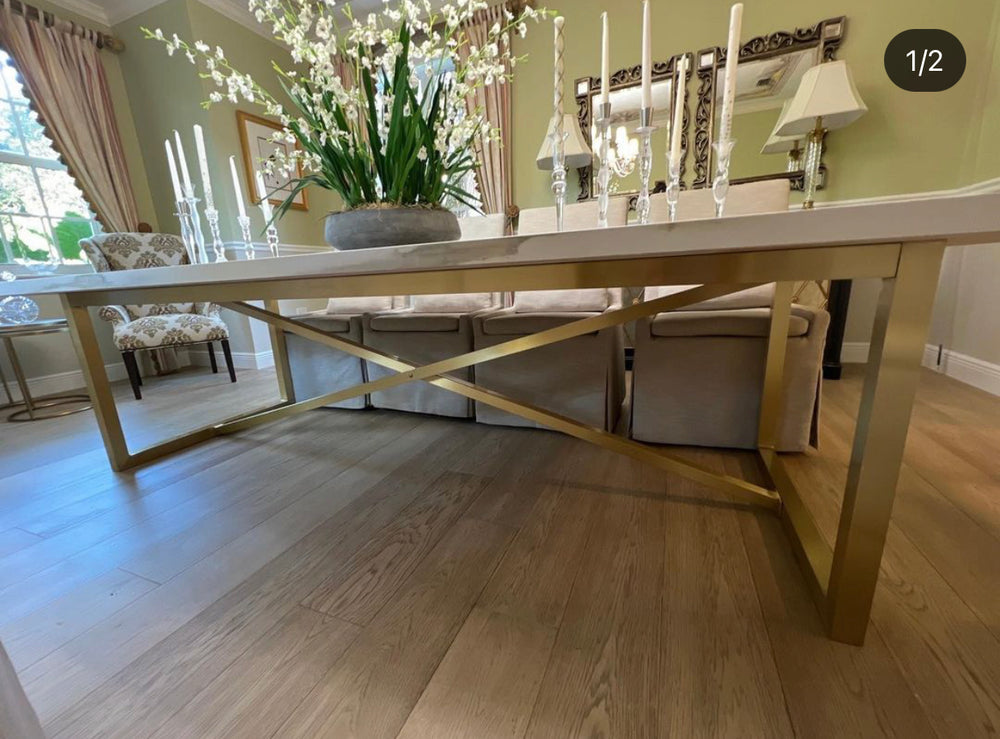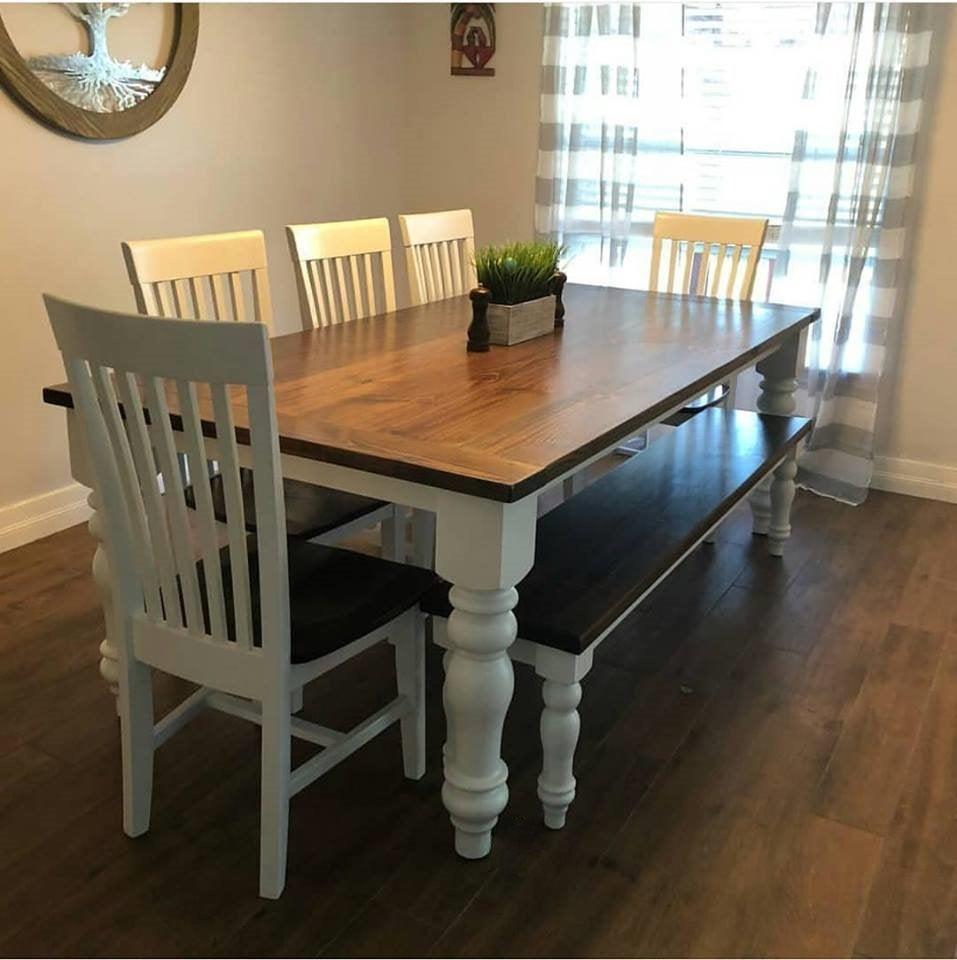The Ultimate Overview to Picking Durable Dining Room Table Legs
The Ultimate Overview to Picking Durable Dining Room Table Legs
Blog Article
Choosing the Perfect Table: What Styles Job Best for Your Home?
Choosing the optimal dining table for your home can be a nuanced process that stabilizes aesthetic appeals and capability. To navigate these options successfully and find a table that really matches your home, consider the adhering to elements in information.
Assessing Your Area
Assessing the dimensions and design of your dining location is a vital very first step in picking the excellent table. Begin by gauging the size and width of the space, accounting for entrances, home windows, and various other building features that might affect table positioning. This makes sure that your table not just fits but likewise permits comfy movement around it.
Take into consideration the variety of people you normally captivate. A table should suit your family's daily needs while supplying sufficient flexibility for periodic guests. As a rule of thumb, allot at the very least 24 inches of table size each to ensure a comfortable eating experience.
It's also vital to keep proper clearance around the table. Ideally, there ought to go to the very least 36 inches in between the table edge and walls or other furnishings, allowing simple accessibility and motion. For spaces where chairs with arms or additional storage space systems like buffets are involved, increasing this clearance to 48 inches is a good idea.
Illumination and atmosphere play substantial duties. Make certain that your eating table straightens with existing lights components or prepare for ample lights services. This detailed spatial evaluation guarantees that your table not just fits literally however likewise harmonizes with your room's total capability and visual.
Popular Table Styles

Traditional table typically include luxuriant details, curved legs, and abundant wood coatings, stimulating a sense of classic sophistication. They are ideal for homes with classic decor or those aiming to add a touch of sophistication to their eating location.
Modern eating tables prioritize simpleness and clean lines, commonly incorporating materials like glass and metal. These tables are optimal for modern spaces, providing a sleek and minimalist appearance that matches minimalist layout ideologies.
Rustic dining tables, on the various other hand, emphasize all-natural products and a handmade look - dining room table legs. They often feature redeemed timber and a distressed finish, creating a warm and welcoming ambience. These tables function well in farmhouse-style homes or those looking for a comfortable, organic feel
Industrial eating tables incorporate resources such as steel and timber, typically showcasing a practical visual. This style is fit for lofts or urban areas, including a touch of rugged beauty and longevity to the dining experience.
Each style offers distinct benefits, making it crucial to choose one that straightens with your home's general design and your personal preferences.
Product Options
When selecting a table, the selection of material plays a crucial function in determining both the table's visual appeals and capability. Timber, metal, glass, and composite products each offer unique benefits and challenges, making it essential to line up the product with your home's style and way of living requirements.
Timber is an ageless and functional alternative, readily available in ranges such as oak, walnut, and mahogany. Understood for its sturdiness and heat, wood matches both conventional and contemporary interiors. Nonetheless, it needs routine maintenance to protect against scrapes and warping.
Metal tables, typically crafted from stainless steel, light weight aluminum, or functioned iron, are applauded for their modern-day allure and robustness. They are specifically fit for industrial or minimal setups but can site be prone to damages and might really feel cool to the touch.
Glass table bring an air of sophistication and openness, suitable for smaller areas as they create an impression of even more room. While easy to tidy, glass can be susceptible to smudges and requires careful dealing with to stay clear of chips and cracks.
Composite materials, such as MDF and plywood, deal cost-effective and adjustable solutions, though they might do not have the durability of all-natural products. Selecting the appropriate product ensures your dining table is both a useful property and an aesthetic joy.
Shape and Size Considerations
After identifying the look at more info proper product for your table, the following consideration is selecting the ideal sizes and shape to match your area. The form of the table substantially influences the area's aesthetic and functionality. Rectangle-shaped tables, one of the most common form, are suitable for bigger areas and can fit a higher variety of guests. They likewise enable a more formal eating experience. On the other hand, round tables promote a sense of affection and are outstanding for smaller eating locations, urging discussion by eliminating corners and making everybody feel just as consisted of.
As a guideline of thumb, assign at least 24 inches of table size per individual to make sure comfortable dining. Furthermore, consider the table's clearance space: there need to be at the check very least 36 inches in between the table side and the wall surfaces or other furnishings. Expanding tables use adaptability if you frequently hold bigger gatherings, supplying additional seating when needed without inhabiting added room daily.
Matching Your Decoration
Selecting an eating table that integrates with your existing decoration is crucial in creating a natural and inviting area. A smooth, minimalist table with tidy lines is suitable for a modern home, while a vintage, elaborate table suits a more conventional setting.
Color and product are just as significant. If your decor includes warm tones and natural materials, consider a wood table to boost the natural feeling. Conversely, a glass or metal table may be better in a room dominated by amazing shades and commercial elements. Take note of the surface, as it should mirror other furniture and fixtures to preserve harmony.
Structure plays an important function. A rough-hewn, reclaimed timber table can add personality to a rustic room, while a refined marble surface area can elevate an extravagant eating location. Finally, consider the scale and proportion of the table in relation to the space size and existing furniture. A well-matched dining table not only enhances aesthetic charm but also improves the overall dining experience.

Conclusion
Choosing the optimal table necessitates mindful factor to consider of area, style, materials, form, and dimension (dining room table legs). Traditional tables enhance traditional interiors with rich timber coatings, while modern tables match modern setups with glass and metal. Rustic styles introduce heat using natural materials, and industrial designs boost metropolitan atmospheres with raw elements. Harmonizing the dining table with existing decoration makes certain both capability and visual allure, contributing to a natural and aesthetically pleasing eating area.
Report this page